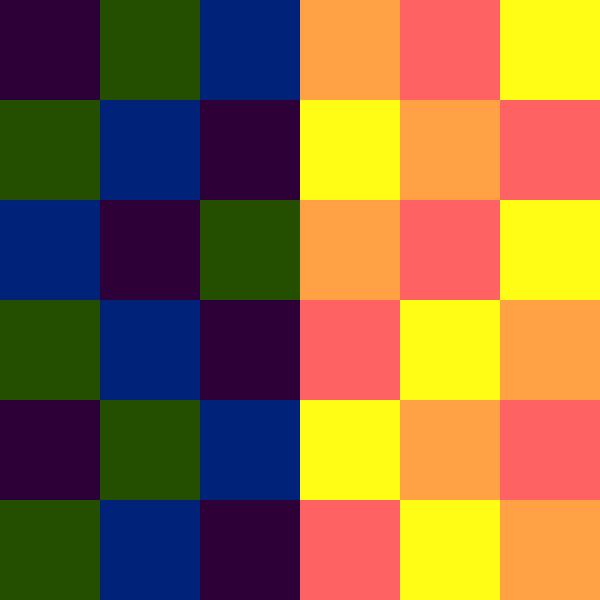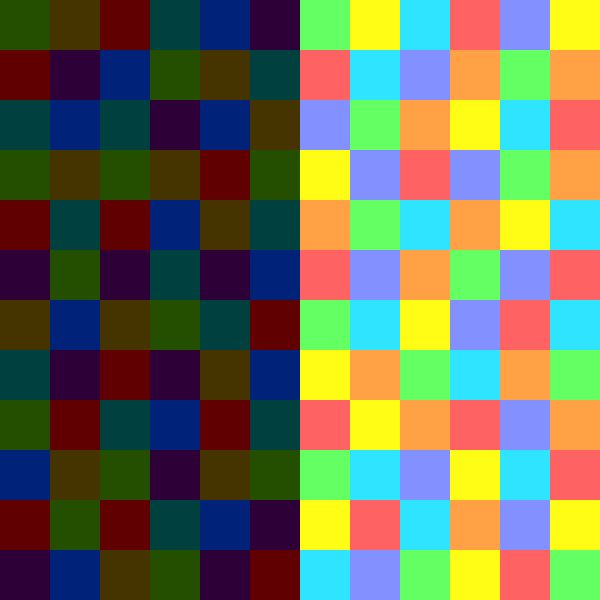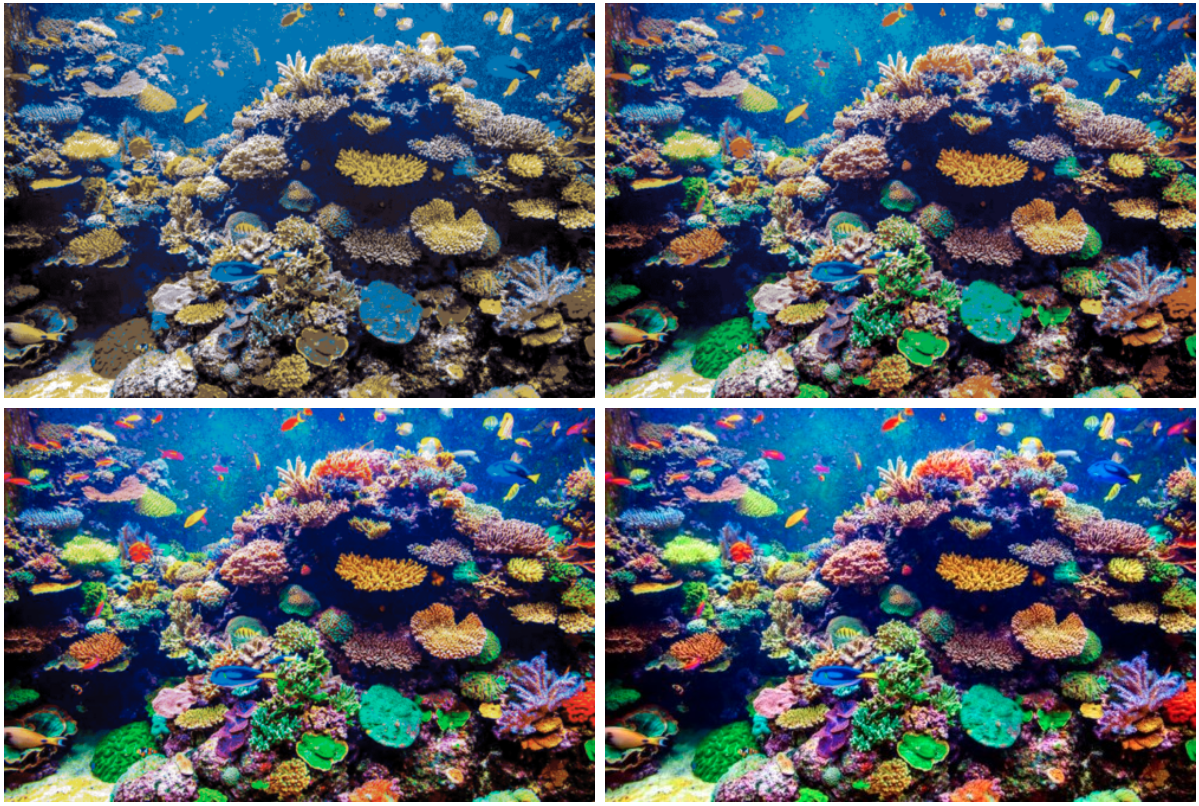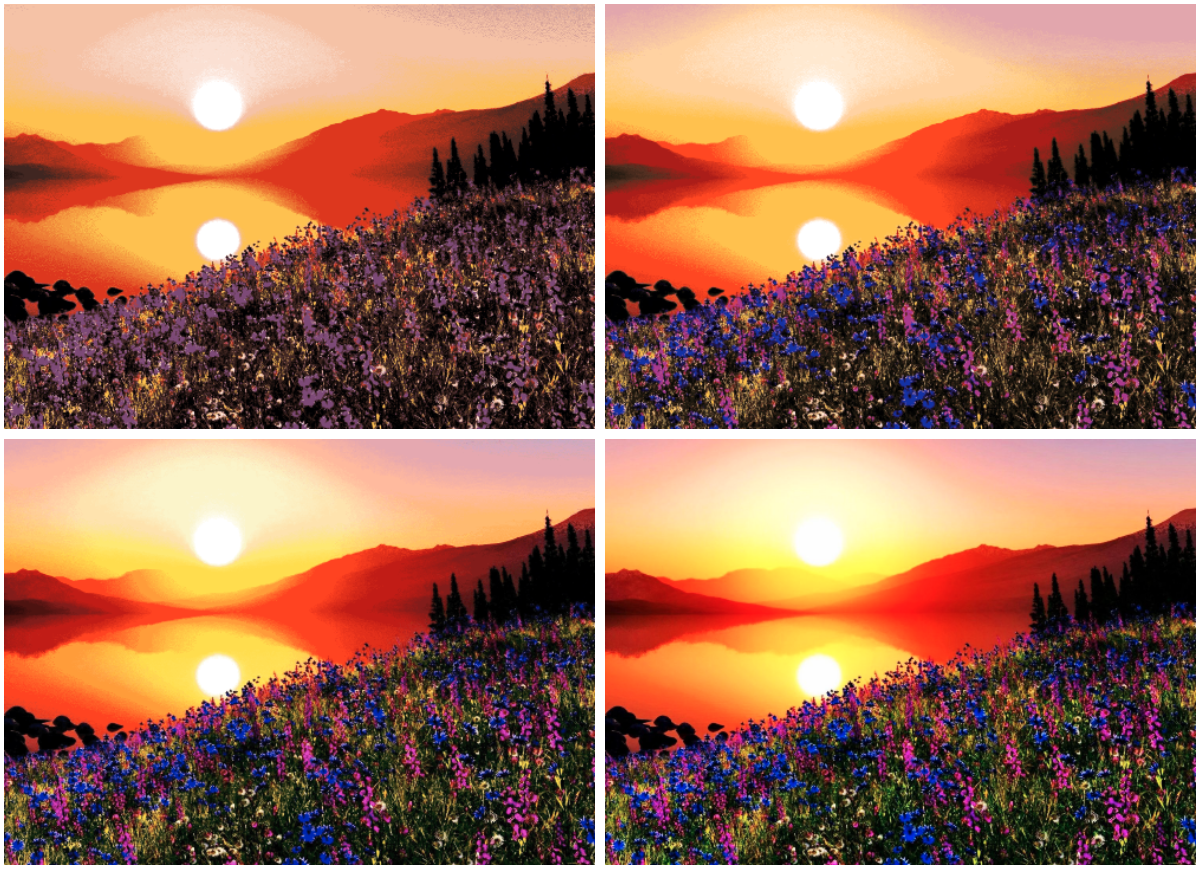Some time ago, I stumbled upon this quote:
Every man takes the limits of his own field of vision for the limits of the world.
— Arthur Schopenhauer
As with any good quote, it feels right and obvious, and you don’t ponder on it too much. It’s because today, we seek for something extraordinary, something unique and different. But if to take some time and think about it, some interesting insights can pop up. Below is the one I had.

Source: natbg.com
We All Start As Blank Slates
Although we may have some genetic knowledge/information at birth, we do not have any understanding of the world around us.
However, once we come into this world, we start to learn. And that’s where it all starts.
Life Is Colorful
Among the first things that we learn in life is to discern between good and bad. We gradually find ourselves in a black and white world, where some things that we do are good, and others are bad. These are the first “colors” that we learn about in life.

Initially, we learn what is bad and what is good
You broke mum’s favorite vase — it’s bad.
You asked for the chamber pot — it’s good.
You ate all your food — it’s good. And so on…
You start to understand the outer world in terms of bad and good and can orient and make some decisions based on your understanding of the world.
At the same time, you start to learn some new “colors.” You realize that something you thought of as being “bad” is actually called pain, while other things you thought as being “good” are actually joy.

And so you grow, discovering life’s colors and enriching your spectrum of understanding.
In the first 5–10 years of your life, you will learn several primary colors that will let you navigate in this world more or less safely. You will get to know the colors of love, joy, surprise, anger, sadness, and fear.

Gradually, you start to distinct basic emotions in your life.
As you grow older, you might start to differentiate between similar colors you previously thought of as a single color. You realize that pain can be physical and can be psychological, or that joy can come from your optimism or from eating a delicious piece of cake. Thus, based on your experience, you learn new colors similar to ones that you already know. At the same time, besides teaching us new hues, life gives us lessons, sometimes tough ones, that reveal the same color, but from the “opposite” side. In our teens, we learn that love can also hurt or that mild pain can be pleasant (e.g., after exercising at the gym). We learn the antipodes of some colors that we already know.

At some point, we learn that life can hurt as well as it can be delightful.
By the time a person reaches his twentieth birthday, they can distinguish between 10–15 different colors on average. These are emotions and character traits that one can differentiate.

The colors of a typical 20 years old adult.
There are dark as well as light and bright colors. For some people, darker colors can predominate, while for others, more luminous colors are central.
But regardless of which one dominates, there are no people with only dark or bright hues.
The Ups And Downs Of Our Life
We all live our lives through the prism of our experiences and emotions. And we all want to live a happy life.
Therefore, the colors of life that we learn throughout our journey on Earth represent how we are able to see and interpret the world around us.
It may seem that learning new colors is effortless and can go on indefinitely. However, after the first 10–15 colors, you must put in more effort to learn a new hue, and this process can even hurt, sometimes badly.
Also, it might seem that “dark colors” are useless, that life would be much better if there were no such colors, but these are as important in one’s life as “bright colors.” Here’s why:

The Happiness level for a three month period.
Can you tell me how happy a person with the above happiness level can be given that their level of happiness was constant for three months?

The happiness level for a six month period.
The reality could be any of the above, except that it might not make any difference in the long run. The reason here is our exceptional ability to adjust to our reality.
As Jonathan Haidt mentions in his book, “The Happiness Hypothesis”:
Within a year, lottery winners and paraplegics have both (on average) returned most of the way to their baseline levels of happiness [Harlow, Harlow, and Meyer, 1950]. The lottery winner buys a new house and a new car, quits her boring job, and eats better food. She gets a kick out of the contrast with her former life, but within a few months, the contrast blurs, and the pleasure fades.
Therefore, contrast is essential, and without life’s downs, there would be no ups, as we simply wouldn’t be able to tell the difference. And even if life would go only up, we wouldn’t know this, because, again, we would have nothing to compare it to.
But we do have all these colors, and we can compare them. And that can make our life more colorful.
We All See Things Differently
Yes, we have different perspectives on things, which is not a groundbreaking discovery (that’s actually no discovery at all). Yet in our day-to-day communication and interaction with other people, aside from the information that we possess, we choose how to behave and react in different cases according to our palette.
You may choose between aggressiveness, understanding, empathy, apathy, openmindedness, friendliness, indifference, worry, and many more colors… if you’ve learned them.
It is probably easy to assume that people know all these concepts and can differentiate between them, but you would be surprised to learn how many do not broaden their primary colors' palette.
Some people just know only 10–15 hues, and that’s it. Every other emotion they encounter in the world, if they do not wish to put the effort to understand and learn it, is simply labeled with one of the existing colors. They can easily label empathy, compassion, affliction, remorse as weakness; or optimism, enthusiasm, delight, as joy.
We can see millions of colors with our eyes, but each of us lives in their own world. And that world might look very different from one person to another.

Source original: geneticliteracyproject.org
In the images above, as well as below, the top left picture is represented with only 10 colors. The top right image has only 15 colors. The bottom left photo is represented by 50 colors. And the bottom right is the original.

Source original: natbg.com
Thus, discerning between different experiences makes up for a richer, more colorful life, while relying on the basic ones and labeling everything else according to one’s own limited experience makes them see similar images all around.
Probably that’s one of the reasons why older people are happier. Their broader palette makes them see and understand the world in much more detail (as a side note — not all old people have this varied palette. Some of them still rely on several colors only).
Besides the fact that darker colors make bright colors brighter, a diverse number of colors that you learn throughout life make you able to adopt the best behavior in different situations (more on this below).
Learning New Colors
This is a fascinating process, but there is no exact rule by which to follow. However, there are several ways you can broaden your palette.
1. You Can See A New “Color” By Yourself
Time flows, and with it, our life goes on, bringing us days after days, full of people, events, and thoughts. We get exposed to new colors when something changes in our lives. We may win, or we may lose (people, relatives, money, jobs, etc.). What is important here is that we should be mindful and understand what color we are exposed to. Remember that in most cases, the natural tendency is to label it to something that we already know, thus failing to learn an important lesson that might help us in the future.
2. You Can Mix Colors
This often happens unconsciously, and “mixing colors” is more of a metaphor (along with the entire article). Yet, in order to mix colors, you need to have a sufficient number of them.
As with real colors (for instance, when mixing yellow and blue, you get green), by mixing character traits and emotional colors, you can get rid of (or transform) some color that predominates in your life right now (e.g., if you are depressed [dark color], you may throw in your life some bright colors specific to you that may alleviate your depression), or you can discover new colors.
This discovery of new colors, especially when these are bright colors, is a very intense experience. I had such an experience after a TEDxChisinau event. I was the co-host of the event, and after a day full of great people and inspiring ideas, we went to the after-party, where we had some wine and random chats with speakers and attendees of the event. It was a great evening. But after it, when I was heading home, tired, I discovered a new state, a new color. It was a mix of enthusiasm, melancholy, determination, and tranquility. It was so strange, yet so inspiring.
3. Someone Can Show You A Color
This one happens less often, yet the colors that other people show you are also quite intense. And sometimes, these people may be complete strangers. Random acts of kindness from people you do not know is one of such examples.
A wonderful feeling and a bright color that I learned came from a person that I’ve met only five times in my life. It is a feeling of mindfulness, authenticity, serenity, and a sense of strong positive energy that goes from the person all at once. I call it sidnicity, — a state of mind when you feel content and full of life; when you feel a strong connection to a person. Unfortunately, that person passed away, but that color of sidnicity he taught me made my life brighter.
I’ve re-experienced sidnicity after that. Another great person that made me feel similar. Yet this time, I recognized that feeling, and I was able to savor and enjoy it.
Viewing The World We Live In Through Different Glasses
Probably you’ve heard the phrase “view the world through rose-colored glasses.” But it is perfectly valid to substitute “rose” with any other color.
When we grow up, we may choose (or we may be forced to choose by our environment) several favorite colors. Some may choose dark colors (discrimination, hate, intolerance), while others may choose bright colors (empathy, optimism, thankfulness). And then we view the world “through [green/dark violet/gray/brown/red/dark blue]-colored glasses” (the meaning of each color depends on the person).
But sometimes we may choose (or, again, be forced) to change the glasses. Yet other times, although rarely, we look at the world through no glasses at all, enjoying its beauty at maximum.
And if you view the world through some color-tinted glasses, and you’re thinking that everything is the same, remember that the world is diverse. There are other hues out there that can make your life more colorful.
Acknowledge that your perception might be narrow and skewed and look to broaden the limits of your worldview.
It takes a lot of effort to do that. But being able to see the world in its full beauty is worth striving for.
If you liked this article, consider subscribing below and following me on twitter (@iuliangulea).